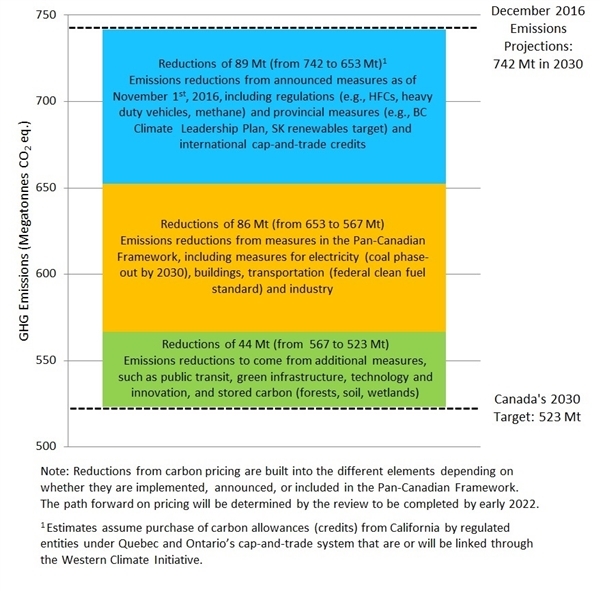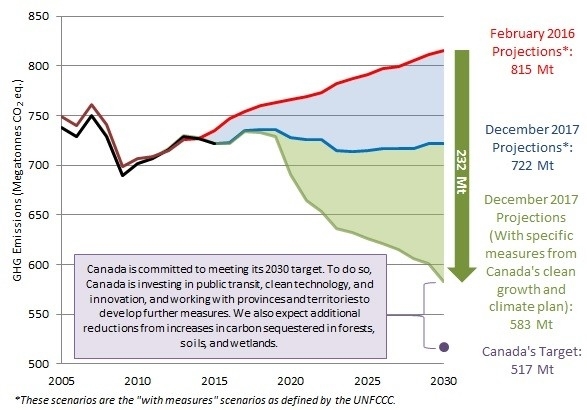The Canadian government has filed a report with the United Nations that shows that the gap between the greenhouse gas reductions we promised to make under the Paris climate agreement and where current and planned policies will get us has grown by 50 percent, relative to what the government was saying in 2016.
When asked to explain the change by French language newspaper Le Devoir, Environment and Climate Change Canada officials attributed it to an increase in the anticipated emissions from the oil and gas industry, and demographic growth. It is unlikely that there have been radical changes in demographic projections over the last two years, so the growth is likely primarily due to an increase in anticipated carbon pollution from Canada’s oil and gas sector.
This revelation comes at an awkward time for the Trudeau government which has been loudly proclaiming that building new oil pipelines (which will increase emissions by enabling increased upstream production) is the key to reducing overall emissions in line with our Paris target.
Federal environment and natural resources ministers recently co-authored an op ed in the Edmonton Journal advocating for the Kinder Morgan pipeline while simultaneously stating that “meeting our climate targets is non-negotiable”. If they really mean that (and I hope they do), then they should show us the math.
Professor Mark Jaccard, a veteran policy analyst (and frequent government GHG modeler / advisor) recently dismantled this double-speak in a Globe and Mail article titled Trudeau’s Orwellian logic: We reduce emissions by increasing them, which is well worth a read. Now the government’s own numbers are telling them that favouring the oil industry is making it even harder to achieve our target.
You can read a summary of Canada’s December 2017 submission to the United Nations here and the full report is available on the United Nations Framework Convention on Climate Change site here (these have only recently been posted publicly). The report includes the graphic showing that the gap between the federal and provincial policies that have been enacted or are proposed as part of the 2016 Pan-Canadian Framework on Clean Growth and Climate Change will reduce emissions to 583 MT, which is 66 MT above the Paris target of 517 MT.
This is an update of the gap analysis presented in the Pan-Canadian Framework when it was published in 2016, which showed a 44 MT gap.

The big change is in the anticipated emissions before GHG-reducing policies kick in. These went from 742 MT in the 2016 Pan-Canadian Framework to 815 MT in the 2017 report to the UN, with Environment Canada stating that the change was due to new estimates for economic growth in the oil and gas sector, and demographic growth.
Another interesting tidbit in Canada’s report to the UN is that it has (for the first time to my knowledge) included an estimate of how much of the reductions (53 MT) are anticipated to be achieved by buying GHG reduction credits from California. Ontario and Quebec are part of the Western Climate Initiative (WCI) with California, and they expect to pay for reductions in California rather than make them domestically.
This trading scheme, however, has not yet been approved as qualifying towards our Paris commitment and given recent uncertainty (i.e. Trump promising to pull the U.S. out of the Paris agreement and Ontario’s Conservative party promising to withdraw from the WCI), we may need a back-up plan.

